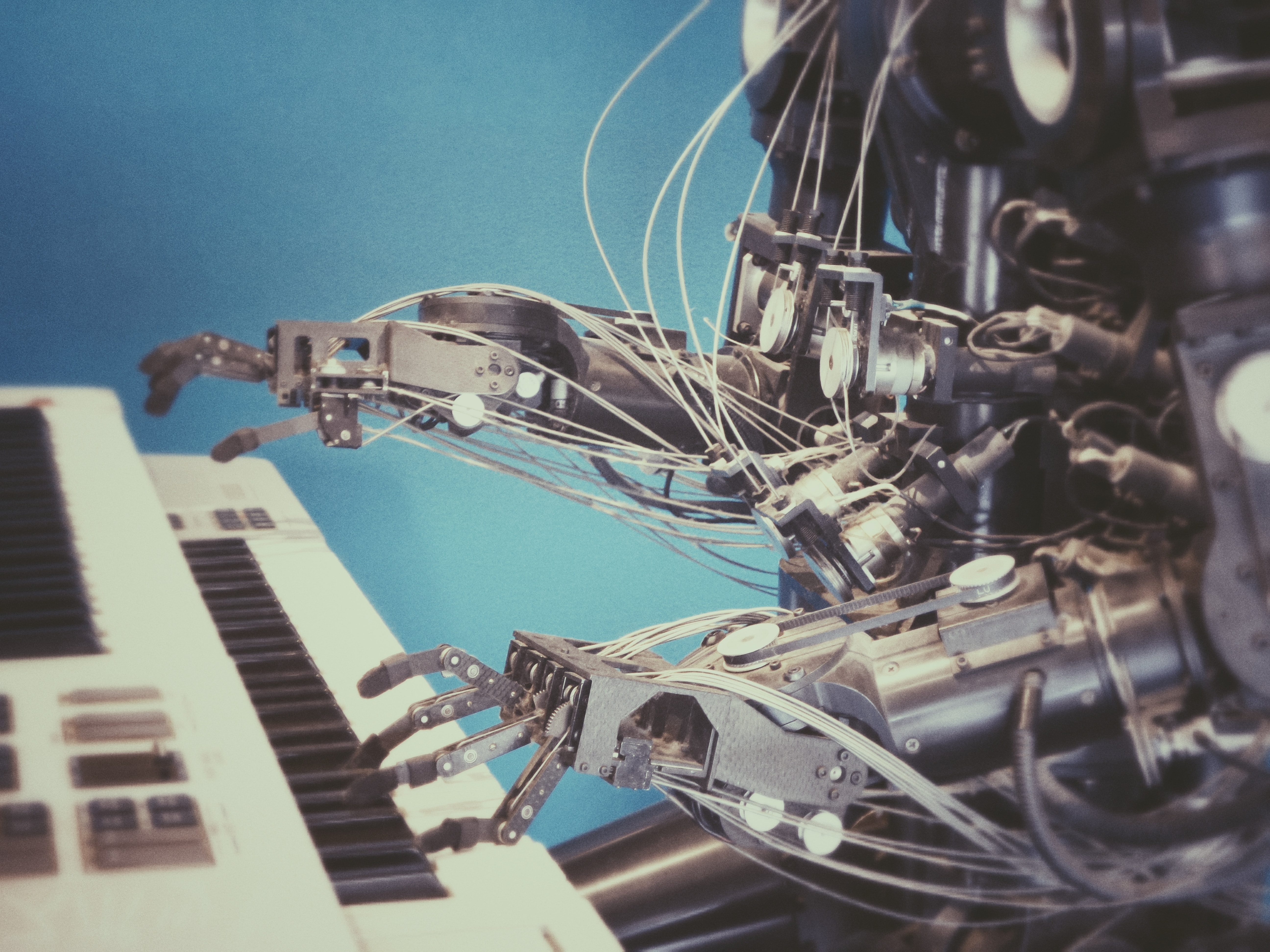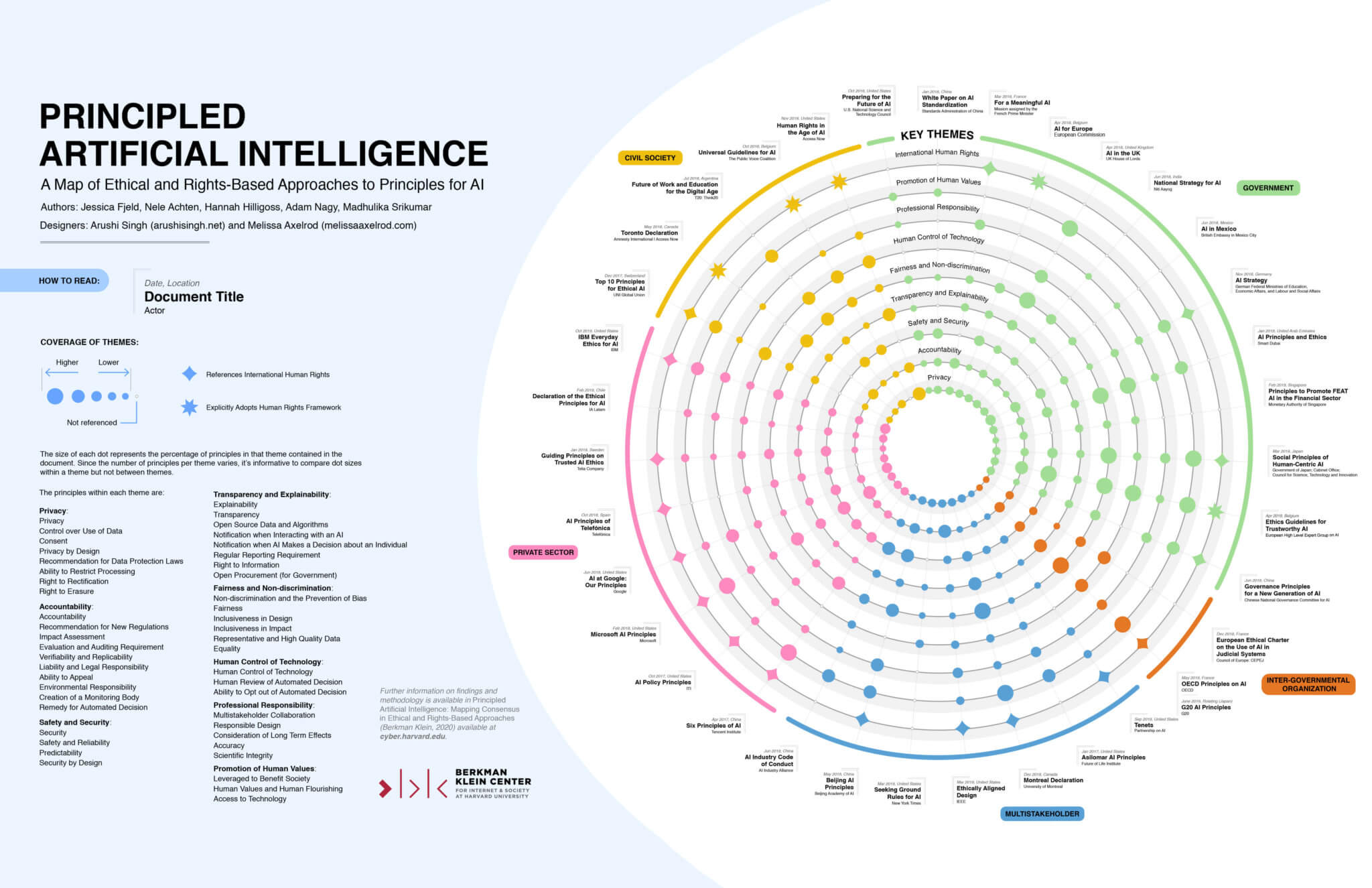- Home
- Business Innovation
- Tech Odyssey 2023: navigating the innovations and forecasting tomorrow’s tech frontiers
Tech Odyssey 2023: navigating the innovations and forecasting tomorrow’s tech frontiers


A technological retrospective: a glimpse into the defining moments of 2023
In the whirlwind era of technological evolution, 2023 stands as a pivotal year. Marked by groundbreaking advancements and transformative trends, it has further reshaped our interaction with technology, influencing every facet of our lives.
These advancements have already produced incredible impacts on society and business at large – and we are only at the beginning; imagine what can happen ten years from now!
In 2023:
- The role of technology in enabling remote work and learning has solidified, confirming a trend that had started before the pandemic and which, thanks to the pandemic, has accelerated in many unexpected ways. In 2023, both virtual collaboration tools and e-learning platforms evolved and are now more capable than ever to offer more interactive and engaging experiences to audiences of different kinds: workers, learners, producers, listeners – and the list goes on. Here are two examples that underscore very well the vital role of digital skills education and innovative learning methods in driving professional growth and industry advancements.
- The first is Spotify: this renowned music streaming service, with 515 million monthly active users (up 22% year-on-year), represents a successful case of leveraging advanced learning methods for corporate innovation. Spotify's Product Manager, Danny Mallas, has recently credited his experience at Hyper Island, a learning methodology and a business school focusing on digital skills and leadership, for enhancing his ability to manage stakeholders and partners more efficiently. We recently wrote on Hyper Island and its many opportunities; remember that?
Image sourced from: DemandsSage
-
- Our second example is the Edison Digital Academy co-organised by Talent Garden. This is a unique combination of skills and culture aimed at teaching thousands of workers at Edison both digital skills and the corporate vision needed to thrive in the global job market.
- Our second example is the Edison Digital Academy co-organised by Talent Garden. This is a unique combination of skills and culture aimed at teaching thousands of workers at Edison both digital skills and the corporate vision needed to thrive in the global job market.
- Telemedicine and Artificial Intelligence (A.I.)-driven diagnostics became more mainstream, revolutionising patient care and medical research. In Europe alone, the telehealth services market is projected to expand from $19.69 billion in 2023 to $58.74 billion by 2028, growing at a compound annual growth rate (CAGR) of 24.44%. In North America, the A.I. in Medical Diagnostics Market was valued at approximately $1.3 billion in 2023 and is expected to reach $3.7 billion by 2028.
Image sourced from: Verified Market Research
In this scenario, wearable tech also played a crucial role in monitoring and managing health conditions. The wearable technology market in the medical sector was projected to exceed $100 billion in 2023. This growth is accompanied by a compound annual growth rate of 15% leading up to 2030. Apple and Garmin are leaders in the smartwatches segment, offering health-related features. Other companies like Asus, Motorola, and Swatch are introducing innovative health features. A notable example includes H2o Therapeutics' app for monitoring Parkinson's disease symptoms using the Apple Watch. More generally, the wearables sector has shown a constant expansion, moving beyond watches and including other objects for various uses.
Image sourced from: Precedence Research
- Let us remain in the field of artificial intelligence. How not to mention the generative AI (that is, a type of artificial intelligence technology that can produce various types of content, including text, imagery, audio and synthetic data), which has produced a real shake-up in all sectors, and particularly in the job market? The global generative A.I. market is projected to grow from $43.87 billion in 2023 to $667.96 billion by 2030, at a CAGR of 47.5% during the forecast period. In Europe (where the Generative A.I. market is expected to reach a market volume of $56.85billion by 2030) the unique combination of multiple languages, cultures, science and tech talent, and strengths in manufacturing and services sectors are making the transformative potential of generative AI especially compelling across various industries. North America's growth, which is driven by the collaboration between corporations and startups, is boosting the Generative A.I. market in North America, with a projected market volume of $ 73.01 billion by 2030.
In our previous posts, we reported how A.I. in general, and Generative AI in particular, are impacting the landscape of project management, inspired leadership in a digital age, as well as a key driver to the ongoing
Image sourced from: TechTarget
- Or, to mention a last example, take the entertainment sector: it witnessed a surge in streaming services, with A.I. algorithms personalising user experiences. Virtual reality (V.R.) and augmented reality (A.R.) technologies offer immersive gaming and media consumption. Worldwide shipments of VR/AR devices were projected to reach 68.6 million units by the end of 2023, with A.R. and V.R. headsets alone expected to see over 30 million units sold annually by the end of the year. In the U.S., V.R. and A.R. usage statistics indicated that 58.9 million and 93.3 million people, respectively, would use these technologies at least once a month. This represents 17.7% and 28.1% of the total U.S. The revenue from V.R. gaming was at $1.1 billion in 2022, with a forecast to reach $2.4 billion by 2024.
Image sourced from: Precedence Research
And now, back to the point: this article delves into the most significant technological developments of 2023, examining their societal and business impacts and peering into the crystal ball to predict what 2024 might hold in terms of both opportunities and challenges.
Zoom out: the macro-trends that are leading us into the 2024
So far, we have given you an overview of a few of the most striking technological advancements that have defined 2023, setting the stage for even more radical and pervasive transformations from 2024 through the coming decades.
We would now like to propose a different point of view to you. Let us move out of the details and let us look at the figure as a whole. The moment you zoom out, you are able to isolate the most promising trends beyond it. actual evolutions. There are 5 of those, each potentially disruptive in terms of both opportunities and challenges.
We introduce them to you (a little secret: we asked the artificial intelligence to draw us an image to go with each of these trends. We hope you like them!):
- A.I. advancements are by far the biggest of all trends. We saw how 2023 was a landmark year for A.I. The launch of more advanced A.I. models further blurred the lines between human and machine capabilities, especially in language processing and problem-solving. A.I. has not only enhanced user experiences but also sparked debates on ethical A.I. usage. Take the case of ChatGPT: in December 2023, it turned one year old. In such a short timeframe, a technology which is still in its infancy hit 100 million weekly users, and over 2 million developers are currently building on the company's API, including the majority of Fortune 500 companies. The use of Generative AI in the workplace spread so quickly that a study of 14,000 workers in 14 countries reveals that over half use generative AI at work without official permission, and 40% use AI-banned tools.
Image created with DALL-E
- The second macro-trend consists of Blockchain (and cryptocurrency). Blockchain technology in 2023 continued its foray beyond cryptocurrencies, with significant adoption in supply chain management and secure transactions. NFTs (Non-Fungible Tokens) gained mainstream acceptance, finding new applications in digital art and intellectual property. To prove this point with numbers, the global blockchain technology market was valued at around $11.14 billion in 2022, and it is projected to grow to $469.49 billion by 2030. Among the most disruptive blockchain applications in 2023, we find cryptocurrencies and asset tokenisation, both of which leverage blockchain technology in innovative ways. The growing interest in cryptocurrencies is driving innovations toward more sustainable and high-performance cryptos, focusing on reducing their carbon footprint and transaction times. Also, advances in Web3 technologies are expected to mitigate these security threats and potentially position cryptocurrencies as replacements for fiat currency.
Image created with DALL-E
- Cybersecurity. With the increasing digital footprint, 2023 saw an enhanced focus on cybersecurity. Advanced threat detection systems using A.I. and machine learning became essential in combating sophisticated cyber threats, emphasising the need for robust digital protection mechanisms. In response to this, many believe that 2024 will be defined by a new security model: Zero Trust. This model operates on the principle of never trusting anyone or anything inside or outside the network perimeter. It differs from traditional measures like firewalls and network perimeters, which are no longer sufficient against diverse and evolving cyber threats. In Zero Trust, every user, device, or service is authenticated and verified before access is granted, and their identity, device, and behaviour are continuously monitored and assessed. Global spending on Zero Trust security is expected to reach $31.1 billion in 2024. Its impact on Return on Investments is estimated at potentially up to 162%.
Image created with DALL-E
- Cloud computing. Cloud computing witnessed exponential growth, driven by the need for remote working solutions and scalable storage options. Hybrid cloud environments became more prevalent, offering flexibility and efficiency for diverse business needs. Companies are already shifting towards serverless computing models, where they pay only for the actual storage space or CPU time they use, without the need to manage and configure underlying infrastructure. This also means that Cloud services tailored to specific industry needs will be rising further, with sectors like finance, healthcare, energy, and manufacturing adopting these solutions for regulatory compliance, disaster recovery, and integrating industry-specific.
Image created with DALL-E
- Consumer tech. On the consumer front, 2023 saw innovative product launches, including next-gen smartphones with enhanced A.I. capabilities, wearable tech with advanced health monitoring, and smart home devices offering unparalleled convenience and connectivity. It is worth remembering that consumers everywhere in the world are demanding sustainable and ethical practices from brands, with 73% willing to change consumption habits to reduce environmental impact. This trend is fueled by heightened awareness of environmental and social issues, often illuminated through social media and digital awareness. Not just that. Advances in A.I. and machine learning enable businesses to offer personalised products and services. Around 66% of customers expect companies to understand their unique needs, marking a shift towards individualised consumer experience.
Image created with DALL-E
It's not all fun and games. There are challenges, too.
If you have followed us so far, you should be as enthusiastic as we are. Who wouldn't want to experience the future ahead, to experience the benefits of digital technologies for themselves? Yet, we all know that these are not just opportunities. The digital future also hides many unknowns that we should know better.
We have singled out three of them, those that we consider truly fundamental.
- Privacy and Data Security. The surge in tech adoption has raised serious privacy concerns. High-profile data breaches and the misuse of personal information have led in recent years to several calls for stricter data protection laws. Many believe the challenge for 2024 lies in protecting sensitive personal information in an age where data is constantly collected and analysed. For instance, a report by the Pew Research Center found that 79% of U.S. adults are concerned about how companies use their data. For others, the key problem lies within A.I. systems operating as "black boxes" where the decision-making process is not clear. According to a survey by KPMG, only 35% of I.T. decision-makers have a high level of trust in their organisation's use of A.I.
Image sourced from: Purpose and Means
- Regulatory Issues. Regulators worldwide grappled with the challenges of keeping pace with rapid tech advancements. Debates around the regulation of cryptocurrencies, A.I. ethics, and content moderation on social media platforms were at the forefront. First, the generative A.I. chip market is expected to be valued at over $50 billion in 2024, a significant increase from almost nothing in 2022. But alongside the rapid growth and integration of generative AI in enterprise software, regulatory bodies, especially in the European Union, will have to move towards setting clear regulatory conditions. Second, the tech industry faces challenges related to the sustainable use of resources and environmental impact. There is an increased focus on reducing energy and raw materials, managing e-waste recycling, and investing in sustainable manufacturing practices. Third, there is a growing trend towards integrating satellite and terrestrial mobile networks to provide global coverage. This is leading to new regulatory challenges around data privacy, security, and cloud sovereignty. Governments and regulators are increasingly focusing on cloud solutions that operate locally, with government cloud expected to surpass $41 billion and distributed cloud to exceed $7 billion.
Image Sourced from: Morning Consult
- Ethical Dilemmas. A.I.'s role in job displacement, the ethical use of facial recognition technology, and the digital divide became hot-button issues, sparking a global conversation on the equitable and responsible use of technology. In 2023, several instances highlighted these ethical concerns. For example, in certain countries, authorities used facial recognition for mass surveillance during public events or protests, leading to criticisms about the infringement of civil liberties. In the corporate sector, some companies faced backlash for using facial recognition in advertising and customer tracking without explicit consent from individuals. Other studies have shown that some facial recognition technologies exhibit racial and gender biases. These systems have been found to be less accurate in identifying individuals of certain ethnic backgrounds or genders, leading to potential discrimination and unfair treatment.

Image sourced from: Association for Progressive Communication
Looking ahead to 2024
So, all in all, 2023 was a year of technological marvels and challenges, setting the stage for an even more dynamic and promising 2024, during which:
- We expect to see further advancements in quantum computing, pushing the boundaries of processing power. Artificial intelligence is also likely to become more nuanced, with ethical AI frameworks being a priority.
- Sustainable tech is set to gain traction, focusing on green computing and eco-friendly gadgets. Health tech will continue to grow, with innovations in personalised medicine and AI-driven health insights.
- The tech landscape in 2024 will likely be characterised by increased regulation and a focus on user privacy. Edge computing could become more prominent, reducing latency and enhancing data processing speeds.
As we move forward with these trends and challenges, it is crucial that all stakeholders will keep pace and avoid lagging behind. For companies, it will be crucial to balance the need for innovation with ethical considerations, ensuring technology continues to serve as a force for positive change in society and business. For professionals at all levels of their careers, it will be of the utmost importance to familiarise themselves with technologies by getting the right skills and entering the right networks. Finally, for public institutions worldwide, it will be fundamental to find the correct rules for technology and advance on the path towards technological progress.

Don't Waste Your Talent. Turn It Into a Career With a Course That Fits Your Needs!
Keep reading

Graduate and Conquer: 4 Tips to Securing Success in Tomorrow’s Job Market

How Will Corporate Training Evolve in 2024? Let’s talk about Experiential Learning and Technological Innovation

Emerging Digital Marketing trends set to dominate the scene in 2024

